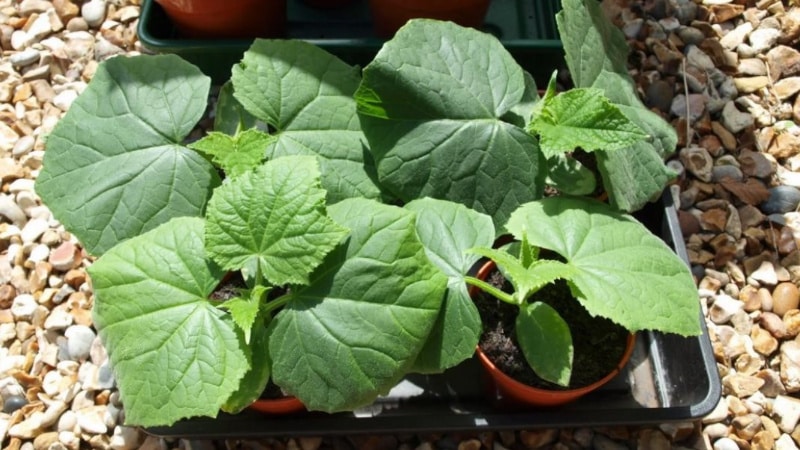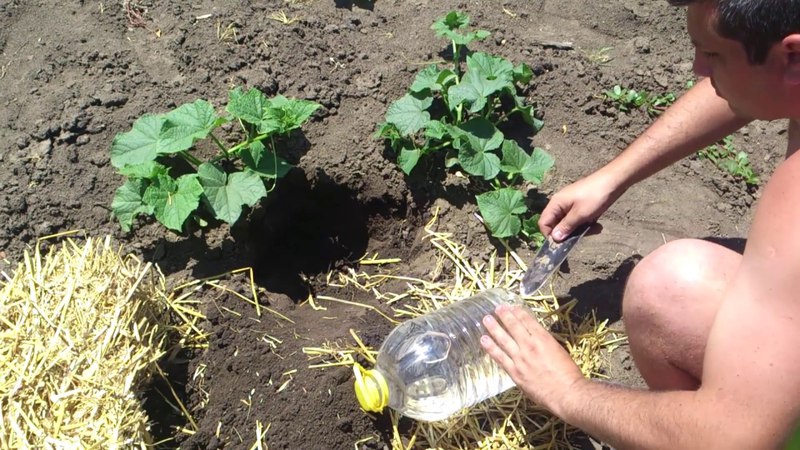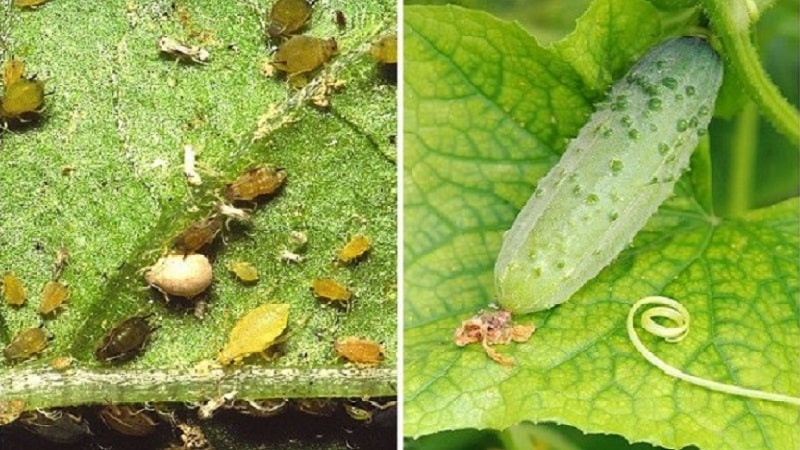Review of the Mamluk cucumber variety for salads and delicious preparations for the winter
Cucumber Mamluk f1 is a parthenocarpic of domestic selection. The culture is characterized by bunched ovaries, ease of care, cold resistance and the ability to grow in extended rotation.
The fruits do not overgrow, do not turn yellow during long-term storage, and no voids form inside. They are good both fresh and in winter preparations. In the article we will talk about the technology of growing a hybrid in protected soil, shaping bushes, methods of combating diseases and pests, and other features of agricultural technology.
Description of the hybrid
The breeding of the Mamluk hybrid was carried out by biologists from the Research Institute for Breeding Vegetable Crops from the Gavrish company.. The culture was included in the state register of the Russian Federation in 2012.
Cucumbers are cultivated in all regions of the country in protected ground. The hybrid is suitable for growing in extended rotation. The plant takes root in any climatic conditions and withstands temperature changes and lack of sunlight.
The bushes are indeterminate, weak-growing, weakly branched, with a female type of flowering. 3-4 ovaries are formed in a node. The rhizome is powerful and can withstand the load of a large harvest.

The distinctive features of the hybrid are presented in the table.
| Indicators | Characteristic |
| Ripening period | 45–50 days |
| Pollination type | Parthenocarpic |
| Fruit weight | 110–130 g |
| Fruit length | 10–14 g |
| Fruit shape | Cylindrical |
| Fruit color | Dark green, with stripes and faint spotting |
| Leaves | Medium size, green color, slightly wrinkled |
| Pulp | Crispy, without voids |
| Taste | Refreshing, no bitterness |
| Skin | Dense, medium tuberous, with white dense pubescence |
| Purpose | Universal |
| Productivity | 13-14 kg per sq. m |
| Sustainability | Weakly resistant to powdery mildew and root rot. Resistant to cucumber green mottled mosaic virus, downy mildew, ascochyta blight |
| Transportability | High |
Chemical composition, KBZHU, beneficial properties
Cucumbers have a rich vitamin and mineral composition. This is a dietary product with virtually no contraindications.
Nutritional value of cucumbers (per 100 g):
- calorie content - 14 kcal;
- proteins - 0.8 g;
- fats - 0.1 g;
- carbohydrates - 2.5 g;
- water - 95 g;
- fiber - 1 g.
Vitamin and mineral compositions are given in the table.
| Name | Content | Norm |
| Vitamin A | 10 mcg | 900 mcg |
| Beta carotene | 0.06 mg | 5 mg |
| Vitamin B1 | 0.03 mg | 1.5 mg |
| Vitamin B2 | 0.04 mg | 1.8 mg |
| Vitamin B4 | 6 mg | 500 mg |
| Vitamin B5 | 0.27 mg | 5 mg |
| Vitamin B6 | 0.04 mg | 2 mg |
| Vitamin B9 | 4 mcg | 400 mcg |
| Vitamin C | 10 mg | 90 mg |
| Vitamin E | 0.1 mg | 15 mg |
| Vitamin H | 0.9 mcg | 50 mcg |
| Vitamin K | 16.4 mcg | 120 mcg |
| Vitamin PP | 0.3 mg | 20 mg |
| Potassium | 141 mg | 2500 mg |
| Calcium | 23 mg | 1000 mg |
| Silicon | 53 mg | 30 mg |
| Magnesium | 14 mg | 400 mg |
| Sodium | 8 mg | 1300 mg |
| Sulfur | 6.5 mg | 1000 mg |
| Phosphorus | 42 mg | 800 mg |
| Chlorine | 25 mg | 2300 mg |
| Iron | 0.6 mg | 18 mg |
| Iodine | 3 mcg | 150 mcg |
| Cobalt | 1 mcg | 10 mcg |
| Manganese | 0.18 mg | 2 mg |
| Copper | 100 mcg | 1000 mcg |
| Molybdenum | 1 mcg | 70 mcg |
| Selenium | 0.3 mcg | 55 mcg |
| Fluorine | 17 mcg | 4000 mcg |
| Chromium | 6 mcg | 50 mcg |
| Zinc | 0.215 mg | 12 mg |
Cucumbers improve the functioning of almost all systems of the human body:
- reduce the risk of developing cancer cells, thanks to lignans and cucurbitacins;
- maintain bone strength;
- strengthen the cardiovascular system;
- regulate the functioning of the nervous system;
- normalize the functioning of the gastrointestinal tract;
- whiten skin;
- replenish water and electrolyte balance;
- remove excess fluid from tissues.
Hybrid agricultural technology
The Mamluk hybrid shows the best results when grown in protected soil. This is one of the features of parthenocarpics. In open ground, after pollination by bees, the shape of cucumbers is often distorted.
Plants require standard care: frequent watering, loosening and weeding beds, adding mineral and organic fertilizing, bush shaping.
Planting by seed
Direct sowing of seeds into the ground is carried out in soil heated to a temperature of +10-12°C.
The soil for sowing is dug up and fertilized with a solution of mullein or chicken manure (10 liters per 1 sq. m). A month before sowing, green manure plants are planted to improve and fertilize the soil. Oats, oilseed radishes, white mustard, and legumes are suitable for greenhouses.
Mown greens serve as an excellent fertilizer: they saturate the soil with nitrogen, phosphorus, potassium, and inhibit the development of pathogenic microflora. To speed up the decay process, the grass is watered with microbiological agents “Vostok-EM” or “Baikal-EM”.
The beds are formed with a bayonet shovel and the surface is leveled with an iron rake. The width of the bed is 70 cm, the depth is 20 cm. A depression is made in the middle and a hot solution of potassium permanganate is poured in. Seeds are planted to a depth of 3-4 cm with the spout facing up for rapid germination. The optimal plant placement scheme is 50x50 cm.
Reference. Seeds without a colored shell are disinfected in a 1% solution of potassium permanganate and soaked in growth stimulants “Zircon” or “Epin”.
Sowing seedlings

Seedlings are grown 2-3 weeks before planting in a permanent place.
The seeds are planted in light and nutritious soil consisting of peat, humus, sawdust or river sand in a ratio of 2:2:1. Ready-made substrate from the store will also work.
The soil mixture is pre-disinfected:
- a strong solution of potassium permanganate or “Fitosporin”;
- calcined in the oven at a temperature of +110°C for 20 minutes;
- steam for 30 minutes.
As a top dressing, add 1 tbsp to one 10 liter bucket. l. superphosphate and 200 g of wood ash.
Cucumber seedlings do not respond well to picking, so large peat cups are used for sowing. In them, seedlings are transferred directly into the ground without damaging the root system.
The containers are filled with moist soil mixture, the seeds are planted to a depth of 1-1.5 cm and covered with polyethylene. Sprouts appear after 3-4 days at a room temperature of +25°C. Then the film is removed and the containers are placed in sunlight.
Mamluk cucumber seedlings grow strong, do not get sick, and therefore do not need additional feeding. For watering once a week, use clean warm water.
The seedlings are transferred to a permanent location at the stage of 3-4 true leaves. The soil temperature should be +15…+16°C. Planting pattern: 50x50 cm, three bushes per 1 m².
Care

The rules for caring for Mamluk cucumbers are simple:
- Installing a drip humidification system on the site or watering the roots with warm, clean water - 3-4 times a week.
- Loosening the beds after each watering to prevent the formation of a hard crust.
- Regular weeding. Mulching the area with hay, straw, sawdust or pine needles can reduce the frequency of weeding.
- Plants are pinched and tied to a trellis to improve ventilation and ease of care.
- Cucumbers are fed frequently, but in moderate doses (4–5 times per season).Organics and minerals are used. Fertilizers with nitrogen are applied before flowering begins. They stimulate the growth of green mass and strengthen the plant.
The feeding agent is chosen depending on the stage of development of the bushes.
| Stage of development | Fertilizer |
| Before flowering | Fill a matchbox of chicken manure with 5 liters of water and leave for a week. Dilute one part of the concentrated infusion with ten parts of water. |
| During the flowering period | 25 g of superphosphate, urea and potassium sulfate pour 10 liters of water. Water the cucumbers 10–12 days after the first feeding. |
| During the fruiting period | 20 g of potassium nitrate per 10 liters of water. Water the bushes 10 days after the second dose of fertilizer. |
| 20 g of potassium magnesium per 10 liters of water. | |
| To prolong fruiting | 10 g of potassium sulfate, 500 ml of chicken manure per 10 liters of water. Water the bushes at the root. |
| 10 g of urea, 5 g of potassium sulfate per 10 liters of water. Treat the above-ground part of the plant in cloudy weather. | |
| Add 40 g of Diammofoska per 1 sq. m. |
Features of cultivation and possible difficulties
The Mamluk hybrid is cultivated in an extended winter-spring rotation in heated greenhouses. Sowing seeds for seedlings is carried out in December-January. The optimal temperature for germination is +25-27°C. After the sprouts appear, the temperature is reduced to +23°C. For the first 48–72 hours, the sprouts are illuminated with a phytolamp to prevent stretching. Humidity is maintained between 70–75%.
The bushes are formed into one stem according to the rules adopted for parthenocarpics:
- shoots and flowers in the axils of the first five leaves are blinding;
- the four lower leaves are completely removed;
- leave six stepsons 20 cm long;
- several stepsons taller pinching, leaving a length of 35 cm;
- at the next 15 nodes, one leaf and one flower ovary are left;
- upon reaching the top point of the trellis, 2–3 leaves and ovaries are left in the node;
- the main stem is attached to the trellis, the growth point is stopped, or wrapped around the crossbar, pinching the crown a meter from the ground.
During the fruiting period, the air temperature in the greenhouse is maintained at +24-26°C during the day and +18-20°C at night.
Diseases and pests

Mamluk cucumbers are weakly resistant to powdery mildew and root rot, and are susceptible to attacks by melon aphids, whiteflies, cucumber mosquitoes, and spider mites.
The table shows signs of diseases and insect damage, and methods of combating them.
| Pest | Signs | Treatment |
| Powdery mildew | A whitish or yellow coating on greenery, small brown balls (spores) on the leaves, droplets of dew, dry leaves curled up. | Add 1 liter of fermented milk product (yogurt, whey, kefir) to 10 liters of water. Bushes are treated as often as necessary.
Dissolve a third of a teaspoon of soda ash and 50 g of soap shavings in 1 liter of water. Treat plants once a week. |
| Root rot (Pythium rhizoctonia, Fusarium) | Slippery, watery, dark spots on greenery, wrinkled dark brown leaves, destroyed root collar and main root tissue. | Diseases are easier to prevent than to fight them. For preventive treatments, the drugs “Gamair”, “Planriz”, “Baktofit”, “Trichodermin”, “Pseudobacterin-2” are used. |
| Spider mite | Small white dots on the backs of leaves, thin cobwebs on the bushes. | At the early stage of the growing season, treat the plantings with “Aktofit” or “Kleschevit”. During the fruiting period, switch to folk remedies. A solution of wood ash and soap is effective (100 g of ash and 200 g of soap crumbs per 10 liters of water). |
| Aphid | Drooping leaves, drops of honeydew, a large concentration of ants. | Biological products “Bitoxibacillin”, “Aquarin”, “Fitoverm” are used against aphids.
400 g of tobacco dust per 10 liters of boiling water - leave for 48 hours and mix in 50 g of soap shavings. |
| Whitefly | Sticky coating on stems and leaves, white larvae in the early stage and flocks of white moths in the late stage. | Chop 2-3 hot peppers and add 10 liters of water. Leave for 24 hours, add 50 ml of soap, 150 g of ash, 5-7 drops of iodine. Spray the bushes. |
Harvesting and application
The first harvest of Mamluk cucumbers is harvested 1.5 months after full germination. Fruits grown in a greenhouse are approximately the same size, do not overgrow, and do not become bitter if removed from the bush in time. To ensure long-term fruiting, cucumbers are harvested every 2–3 days.
In the open air, the fruits grow slightly hooked, but this does not impair their taste.
The harvest is stored in a cool place for 2–3 weeks. The fruits are consumed fresh, used for pickling and pickling, and preparing winter salads. They retain crispness during heat treatment and do not soften in the marinade.
Advantages and disadvantages
Advantages of a hybrid:
- early ripeness;
- possibility of cultivation in extended rotation;
- excellent sweetish and refreshing taste without bitterness;
- resistance to diseases, low and high air temperatures;
- keeping quality;
- tolerates transportation well.
Among the disadvantages:
- the need to shape bushes;
- cultivated in a greenhouse - in open ground it will not be possible to achieve high yields;
- poor resistance to powdery mildew and root rot.
Reviews
Reviews about the Mamluk hybrid are positive. Farmers note high productivity, resistance to disease and cold.
Ekaterina, Mr.Zarechny: «I have a small vegetable business. I grow cucumbers and tomatoes in a heated greenhouse in winter. The Mamluk hybrid has proven itself to be the best. The crop is not susceptible to most known diseases; I can easily cope with attacks of aphids and spider mites with the help of Fitoverm. The fruits grow evenly, no more than 12 cm in length. The taste is excellent, there is no bitterness.”
Julia, Perelub: “I planted Mamluk last year in a greenhouse, on the recommendation of a neighbor. The crop is not demanding on soil composition, is cold-resistant, and productive. Cucumbers have a pleasant taste, they are not bitter, and there are no empty spaces inside. Maintenance is simple, the main thing is to water it on time, loosen the beds and fertilize.”
Conclusion
Mamluk cucumbers are a highly productive crop for indoor soil. Extended turnover, disease resistance, high transportability and keeping quality, friendly yield, lack of bitterness in the fruits are the main advantages of the hybrid.
The crop is grown everywhere. An important condition for successful cultivation is maintaining the optimal temperature in the greenhouse (+25-27°C), removing weeds, applying organic and mineral fertilizers, and preventive treatments with “Gamair”, “Planriz”, “Baktofit”, “Trichodermin” against fungal infections.